Top 5 temples to visit in Bharmour
Devbhoomi Himachal, often known as heaven on earth, has very rich mythological past. There are number of famous temples in Himachal swarmed by massive number of devottes from all corners…
Devbhoomi Himachal, often known as heaven on earth, has very rich mythological past. There are number of famous temples in Himachal swarmed by massive number of devottes from all corners…
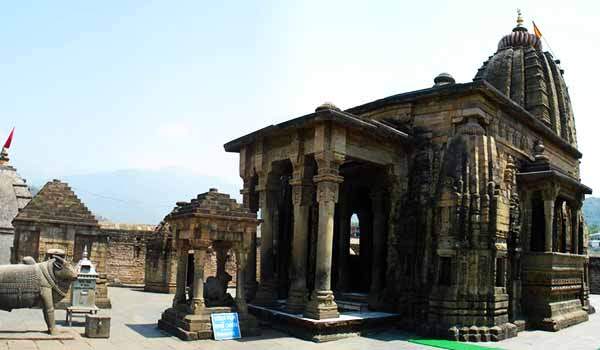 Baijnath Temple is one of most famous temples of Lord Shiva in Himachal Pradesh. Baijnath temple is located at a distance of 16 kms from Palampur in the Beas valley, The Baijnath temple was originally named as Kirangama and the name was changed to Baijnath after the temple was dedicated to Lord Shiva. Apart from the main deity lord Shiva this temple has the images of Goddess Chamunda, Surya Dev (the Sun God), Lord Kartikeya (son of Lord Shiva) and a big structure of Lord Nandi (Carrier of Lord Shiva) in front of the Temple. One of the 12 Jyotirlingas are also located in the sanctum of this Baijnath temple. The temple is imensley popular and people believe that Lord Shiva will free them from all kinds of ailments and diseases.
Baijnath Temple is one of most famous temples of Lord Shiva in Himachal Pradesh. Baijnath temple is located at a distance of 16 kms from Palampur in the Beas valley, The Baijnath temple was originally named as Kirangama and the name was changed to Baijnath after the temple was dedicated to Lord Shiva. Apart from the main deity lord Shiva this temple has the images of Goddess Chamunda, Surya Dev (the Sun God), Lord Kartikeya (son of Lord Shiva) and a big structure of Lord Nandi (Carrier of Lord Shiva) in front of the Temple. One of the 12 Jyotirlingas are also located in the sanctum of this Baijnath temple. The temple is imensley popular and people believe that Lord Shiva will free them from all kinds of ailments and diseases.
A very interesting and spiritual fact of the temple lies in its water, as the water of the temple premises is considered to have curative and medicinal properties. Due to such spiritual and auspicious reasons, the temple draws large number of devotees every year. The ‘Shivratri’ festival is celebrated during the month of March and tourists come to this place to get blessings of Lord Shiva.
Golden Temple is also known as Darbar Sahib and Hamrrinder Sahib. Golden temple is a prominent Sikh Gurdwara located in the city of Amritsar, Punjab, India. It was 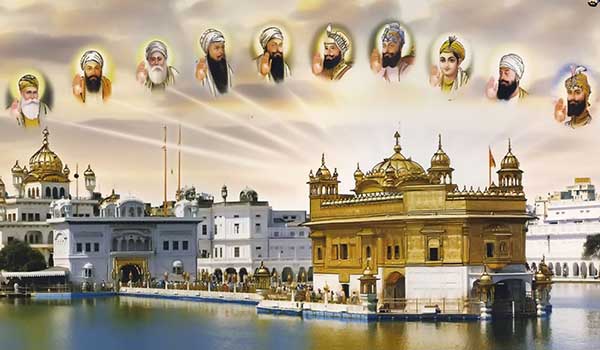 built by the fifth Sikh guru, Guru Arjan Dev, in the 16th Century. In 1604, Guru Arjan Dev completed the Adi Granth, the holy scripture of Sikhism, and installed it in the Gurdwara. There are four doors to get into the Golden Temple (Darbar Sahib), which symbolize the openness of the Sikhs towards all people and religions.The present day Gurdwara was rebuilt in 1764 by Jassa Singh Ahluwalia with the help of other Sikh Misl’s. In the early nineteenth century, Maharaja Ranjit Singh secured the Punjab region from outside attack and covered the upper floors of the Gurdwara with gold, which gives it its distinctive appearance and English name the Golden Temple.
built by the fifth Sikh guru, Guru Arjan Dev, in the 16th Century. In 1604, Guru Arjan Dev completed the Adi Granth, the holy scripture of Sikhism, and installed it in the Gurdwara. There are four doors to get into the Golden Temple (Darbar Sahib), which symbolize the openness of the Sikhs towards all people and religions.The present day Gurdwara was rebuilt in 1764 by Jassa Singh Ahluwalia with the help of other Sikh Misl’s. In the early nineteenth century, Maharaja Ranjit Singh secured the Punjab region from outside attack and covered the upper floors of the Gurdwara with gold, which gives it its distinctive appearance and English name the Golden Temple.
Golden Temple is considered holy by Sikhs as well as hindus. The most holy text of Sikhism, the Guru Granth Sahib, is always present inside the Gurdwara. Its construction was mainly intended to build a place of worship for men and women from all walks of life and all religions to come and worship God equally. Over one lakh people visit the holy shrine daily for worship.
Golden Temple (Darbar Sahib) literally means The Temple of God. The fourth guru of Sikhism, Guru Ram Das ji, excavated a tank in 1577 CE which subsequently became known as Amritsar (meaning “Pool of the Nectar of Immortality”), giving its name to the city that grew around it. In due course, a Sikh edifice, Golden Temple (meaning “the abode of God”), rose in the middle of this tank and became the supreme centre of Sikhism. Its sanctum came to house the Adi Granth comprising compositions of Sikh Gurus and other saints considered to have Sikh values and philosophies, e.g., Baba Farid, and Kabir. The compilation of The Adi Granth was started by the fifth guru of Sikhism, Guru Arjan Dev ji.
A pilgrimage to the Holy Shrine of Maa Vaishno Devi Ji is considered to be one of the holiest pilgrimages of our times. Popular the world over as Moonh Maangi 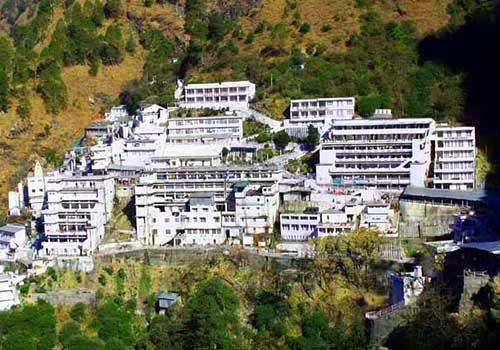 Muradein Poori Karne Wali Mata, which means, the Mother who fulfills whatever Her children wish for, Maa Vaishno Devi Ji resides in a Holy Cave located in the folds of the three peaked mountain named Trikuta (pronounced as Trikoot). The Holy Cave attracts millions of devotees every year. In fact, the number of Yatris visiting the Holy Shrine annually now exceeds one crore. This is due to the unflinching faith of the devotees who throng the Shrine from all parts of India and abroad. The Holy Cave of the Mother is situated at an altitude of 5200 ft. The Yatris have to undertake a trek of nearly 12 km from the base camp at Katra. At the culmination of their pilgrimage, the yatries are blessed with the Darshans of the Mother Goddess inside the Sanctum Sanctorum- the Holy Cave. These Darshans are in the shape of three natural rock formations called the Pindies. There are no statues or idols inside the Cave.
Muradein Poori Karne Wali Mata, which means, the Mother who fulfills whatever Her children wish for, Maa Vaishno Devi Ji resides in a Holy Cave located in the folds of the three peaked mountain named Trikuta (pronounced as Trikoot). The Holy Cave attracts millions of devotees every year. In fact, the number of Yatris visiting the Holy Shrine annually now exceeds one crore. This is due to the unflinching faith of the devotees who throng the Shrine from all parts of India and abroad. The Holy Cave of the Mother is situated at an altitude of 5200 ft. The Yatris have to undertake a trek of nearly 12 km from the base camp at Katra. At the culmination of their pilgrimage, the yatries are blessed with the Darshans of the Mother Goddess inside the Sanctum Sanctorum- the Holy Cave. These Darshans are in the shape of three natural rock formations called the Pindies. There are no statues or idols inside the Cave.
Darshans are open round the clock throughout the year. Since the year 1986, when the Maa Vaishno Devi Shrine Board (commonly called Shrine Board) was formed, the management of the Shrine and regulation of the Yatra has been vested in the Board. The Board has undertaken a number of developmental activities aimed at making the Yatra a comfortable and satisfying experience for the Yatris. The Board continues to reinvest the offerings and donations received in carying out improvements in various kinds of Yatri facilities.
Mata Mansa Devi temple is a Hindu temple dedicated to goddess Mansa Devi who is a form of Shakti. This temple is located in the Panchkula district of Haryana state in India. The temple complex is spread of 100 acres (400 meter square) of the Shivalik foothills in village Bilaspur, near Mani Majra and Panchkula, 10 km from Chandigarh and Chandi Mandir which is another popular Devi shrine in this region. Mata Mansa Devi temple is one of the most popular Shakti temples of North India. Thousands of devotees visit this shrine from various parts of the country. During Navratra fair number of pilgrims visiting Mata Mansa Devi temple increases to lakhs for the nine auspicious days of Navaratras.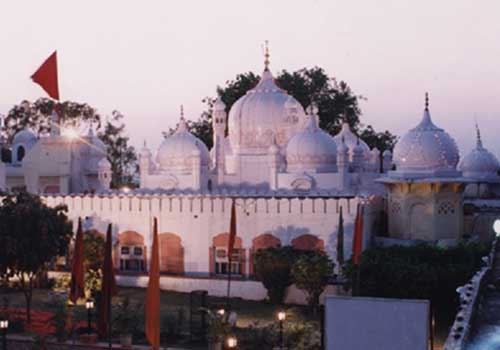 Maharaja Gopal Singh of Mani Majra constructed the present main temple of Shri Mansa Devi, which is situated on the Shivalik foothills in village Bilaspur, Tehsil and District Panchkula, during the period 1811-1815. At a distance of 200 meters from the main temple is the Patiala temple which was constructed by Karam Singh, a Sikh, the then Maharaja Patiala in the year 1840. This temple had the patronage of Manimajra State. After the merger of princely states into PEPSU the Patronage of State Govt. ended and the temples remained neglected. The raja of Manimajra then appointed pujari as ‘khidmatuzar’ of this temple whose duty was to worship the deity of the temple. After the merger of princely State into Pepsu these pujaris became independent on the matter of controlling and managing the affairs of the temple and the land attached to the temple. They could neither maintain this temple nor provide necessary facilities to the visiting devotees and thus the condition of the temple deteriorated day by day. So much so that there were no proper arrangements for pilgrims visiting the temple during Navaratra melas. The complex was in awfully neglected condition till the establishment of the Board.
Maharaja Gopal Singh of Mani Majra constructed the present main temple of Shri Mansa Devi, which is situated on the Shivalik foothills in village Bilaspur, Tehsil and District Panchkula, during the period 1811-1815. At a distance of 200 meters from the main temple is the Patiala temple which was constructed by Karam Singh, a Sikh, the then Maharaja Patiala in the year 1840. This temple had the patronage of Manimajra State. After the merger of princely states into PEPSU the Patronage of State Govt. ended and the temples remained neglected. The raja of Manimajra then appointed pujari as ‘khidmatuzar’ of this temple whose duty was to worship the deity of the temple. After the merger of princely State into Pepsu these pujaris became independent on the matter of controlling and managing the affairs of the temple and the land attached to the temple. They could neither maintain this temple nor provide necessary facilities to the visiting devotees and thus the condition of the temple deteriorated day by day. So much so that there were no proper arrangements for pilgrims visiting the temple during Navaratra melas. The complex was in awfully neglected condition till the establishment of the Board.
Maa Vajreshwari (Brajeshwari)Devi Temple is a Hindu temple dedicated to the goddess Vajreshvari, located in the town Nagarkot, in the Kangra district of Himachal Pradesh, India. Vajreshwari Devi Temple is 11 km away from the nearest railway station of Kangra. The Kangra Fort is situated nearby. It is located on a mountain near Chamunda Devi temple which is 16 km from Nagarkot.
The primary deity of the temple is Maata Vajreshvari, also spelled as Brajeshwari, Vajrábái and Vajrayogini. Maata Vajreshvari is considered as an incarnation of goddess Parvati or Aadi-Maya on earth. Her name literally means “the lady of the Vajra (thunderbolt)”. 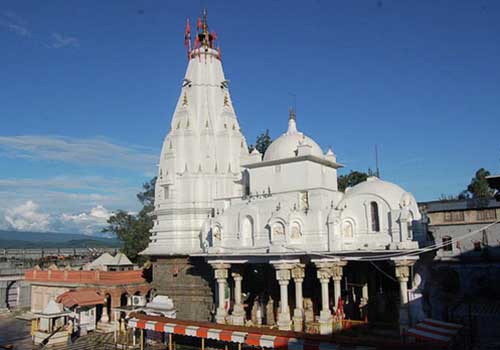 Legend says that thousands of years ago, a Rakshasa (demon) named Kalikala or Kalikut troubled the rishis (sages) and humans in the region of Vadvali and waged a war against the devas (gods). Distressed the gods and sages headed by Vashishta performed the Chandi yajna, a fire offering to the Goddess, to please Her. An aahuti (offering of ghee in yajna) was not granted to Indra (king of devas). Enraged, Indra hurled his Vajra – one of most powerful weapons in Hindu mythology- at the yajna. The terrified gods and sages prayed to the Goddess to save them. The Goddess appeared in all her glory at the site and not only swallowed the Vajra and humbled Indra but also killed the demons. Rama requested the Goddess that she should stay in the region of Nagarkot and be known as Vajreshvari. Thus, the Vajreshvari temple was established in this region.
Legend says that thousands of years ago, a Rakshasa (demon) named Kalikala or Kalikut troubled the rishis (sages) and humans in the region of Vadvali and waged a war against the devas (gods). Distressed the gods and sages headed by Vashishta performed the Chandi yajna, a fire offering to the Goddess, to please Her. An aahuti (offering of ghee in yajna) was not granted to Indra (king of devas). Enraged, Indra hurled his Vajra – one of most powerful weapons in Hindu mythology- at the yajna. The terrified gods and sages prayed to the Goddess to save them. The Goddess appeared in all her glory at the site and not only swallowed the Vajra and humbled Indra but also killed the demons. Rama requested the Goddess that she should stay in the region of Nagarkot and be known as Vajreshvari. Thus, the Vajreshvari temple was established in this region.
Another legend says that Indra and other devas went to goddess Parvati and requested her to help slay the demon Kalikala. Goddess Parvati assured that she would come to their aid at the right time and ordered them to fight with the demon. In the battle, Kalikala swallowed or broke all weapons thrown at him. Finally, Indra threw the Vajra at the demon, which Kalikala broke into pieces and from the Vajra, emerged the Goddess, who destroyed the demon. The devas extolled her as Vajreshwari and built her temple.
Chintpurni Devi Temple is a place of pilgrimage in India. Chintpurni is located in Una district Himachal Pradesh state, surrounded by the western Himalaya in the north and east in…
The flaming temple of Himachal Pradesh, Jwalaji temple is located at a distance of 34 km south of Kangra Valley. The Jawalaji temple is considered very powerful, and count as one of the 51 Shakti-Pitha temples in India. It is here that Sati’s tongue fell which can now be seen in the form of the flame.
The ancient temple, built against a wooded spur, has a dome that was glided by Maharaja Ranjit Singh. Pilgrims consider an eternally burning flame emanating from a hollow rock in the sanctum to be a manifestation of goddess Devi. The temple comes alive with Nawaratra celebrations and colourful fairs during March-April and Sept-Oct every year. The famous Jwalamukhi Temple is about 56 km from Dharamsala in the Valley of Beas. The goddess is manifest here as tiny blue flames and worshiped as such. There is a musical fountain here which is a pleasure to watch during nights.
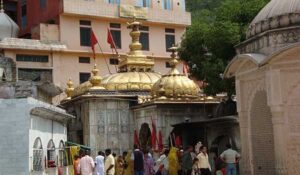 The Jwalamukhi Temple in Kangra District of Himachal is considered extremely sacred for the Hindus. The legend of the Jwalamukhi Temple relates to Sati. Here the goddess is manifested as tiny flames that burn through the fissures in the age old rock. The temple of Jwalamukhi is not an architectural delight. Moreover, there is no idol to worship too. Unlike any other temple, this one doesn’t have a statue or an image, but a constantly burning blue flame that seems to come from the rocks. Jwalamukhi Temple is a temple of the Goddess of Light. Jwalamukhi is also known as the Flaming Goddess or She of the Flaming Mouth. The building has a gilt dome and a silver plated folding doors. Inside, there is a 3 feet square pit with pathway all around. In the centre, there is a hollowed rock over a primary fissure of flame. This one is regarded as the mouth of the Mahakali. Flames emit out from several other point in the pit. They are nine in total and represent the different form of the goddess – Saraswati, Annapurna, Chandi, Hing Laj, Vindhya Vasini, Mahalakshmi, Mahakali, Ambika and Anjana. There are two lions in front of the temple.
The Jwalamukhi Temple in Kangra District of Himachal is considered extremely sacred for the Hindus. The legend of the Jwalamukhi Temple relates to Sati. Here the goddess is manifested as tiny flames that burn through the fissures in the age old rock. The temple of Jwalamukhi is not an architectural delight. Moreover, there is no idol to worship too. Unlike any other temple, this one doesn’t have a statue or an image, but a constantly burning blue flame that seems to come from the rocks. Jwalamukhi Temple is a temple of the Goddess of Light. Jwalamukhi is also known as the Flaming Goddess or She of the Flaming Mouth. The building has a gilt dome and a silver plated folding doors. Inside, there is a 3 feet square pit with pathway all around. In the centre, there is a hollowed rock over a primary fissure of flame. This one is regarded as the mouth of the Mahakali. Flames emit out from several other point in the pit. They are nine in total and represent the different form of the goddess – Saraswati, Annapurna, Chandi, Hing Laj, Vindhya Vasini, Mahalakshmi, Mahakali, Ambika and Anjana. There are two lions in front of the temple.
Shri Naina Devi Ji Temple is connected to NH-21 & is 70 kilometers from Bilaspur, 108 Km from Chandigarh, and 18 Km from Bhakra and 20 km from Anandpur Sahib. It is situated on triangle Hill also known as Naina Dhar hill which is 3535 feet from Sea Level in Distt. Bilaspur, Himachal Pradesh. Shri Naina Devi Ji Temple has emerged as one of the most reverted center of pilgrims in region for both Hindu and Sikhs. Surrounded by famous land mark of Bhakra Dam, Anandpur Sahib, and Govind Sagar Lake. It is one of the famous 51 Shakti Peeths of Hindus having mythological linkage with Lord Shiva & Guru Govind Singh. Several mythological stories are associated with the establishment of the temple.
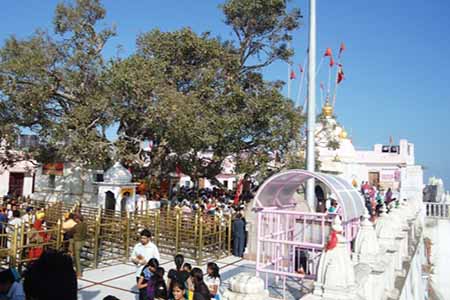 According to a legend, Goddess Sati burnt herself alive in Yagna, which distressed Lord Shiva. He picked the corpse of Sati on her shoulder and started his Taandav dance. This horrified all deities in the heaven as this could lead to holocaust. This urged Lord Vishnu to unleash his Chakra that cut the Sati’s body into 51 pieces. Shri Naina Devi Temple is the place where eyes of Sati fell down. Another story related to the temple is of a Gujjar Boy named Naina. Once he was grazing his cattle and observed that a white cow is showering milk from her udders on a stone. He saw the same thing for next several days. One night while sleeping, he saw Goddess in her dreams who told him that the stone is her Pindi. Naina told about the entire situation and his dream to Raja Bir Chand. When Raja saw it happening in reality, he built a temple on that spot and named the temple after Naina’s name.
According to a legend, Goddess Sati burnt herself alive in Yagna, which distressed Lord Shiva. He picked the corpse of Sati on her shoulder and started his Taandav dance. This horrified all deities in the heaven as this could lead to holocaust. This urged Lord Vishnu to unleash his Chakra that cut the Sati’s body into 51 pieces. Shri Naina Devi Temple is the place where eyes of Sati fell down. Another story related to the temple is of a Gujjar Boy named Naina. Once he was grazing his cattle and observed that a white cow is showering milk from her udders on a stone. He saw the same thing for next several days. One night while sleeping, he saw Goddess in her dreams who told him that the stone is her Pindi. Naina told about the entire situation and his dream to Raja Bir Chand. When Raja saw it happening in reality, he built a temple on that spot and named the temple after Naina’s name.
Shri Naina Devi Temple is also known as Mahishapeeth because of defeat of demon Mahishasur by the Goddess. According to the legends, Mahishasur was a powerful demon who was blessed by the boon of immortality by Lord Brahma, but the condition was that he could be defeated only by an unmarried woman. Due to this boon, Mahishasur started spreading terror on Earth and Gods. To cope with the demon, all Gods combined their powers and created a Devi to defeat him. The Devi was gifted different types of weapons by all Gods. When Mahishasur got mesmerized by the immense beauty of Devi and proposed her to marry him. Devi told him that she will marry him if he would overpower her. During the battle, Devi defeated the demon and took out both his eyes. This urged Gods to happily applaud “Jai Naina” and hence the name.
Chamunda Devi Temple is located at a distance of 15 km from Dharamsala in Himachal Pradesh. Dedicated to goddesses Durga or Chamunda (Hindu deity), the surroundings of the temple provide an excellent venue for meditation prayers and spiritual attainments. The Chamunda Devi Temple is said to be more than 700 years old. It is a big temple complex with a large pond where devotees take a dip. The temple is dedicated to Chamunda Devi, who is a form of Durga / Shakti. Chamunda Devi Mandir is believed to be the abode of ‘Shiva and Shakti’. Due to this reason, it is also known as ‘Chamunda Nandikeshwar Dham’. 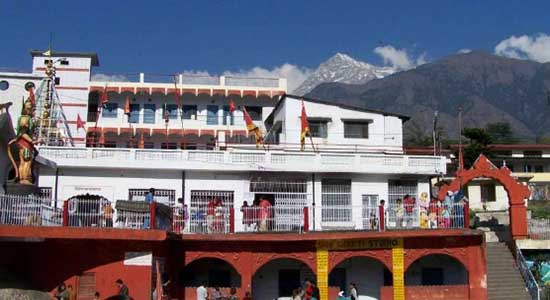 Chamunda Devi is considered as the wrathful form of Durga, but at the same time, the Goddess is kind to her true devotees. The term ‘Chamunda’ has been derived from two words, ‘Chanda’ and ‘Munda’. As per the mythological legends, Durga made a goddess with her power, to slay the demons, Chanda and Munda. With her immense power, the Goddess killed the demons. Goddess Durga became happy with the slaughter and blessed the goddess that she would be known and worshipped as Chamunda.
Chamunda Devi is considered as the wrathful form of Durga, but at the same time, the Goddess is kind to her true devotees. The term ‘Chamunda’ has been derived from two words, ‘Chanda’ and ‘Munda’. As per the mythological legends, Durga made a goddess with her power, to slay the demons, Chanda and Munda. With her immense power, the Goddess killed the demons. Goddess Durga became happy with the slaughter and blessed the goddess that she would be known and worshipped as Chamunda.
There is nothing extra-ordinary about the architecture of this temple, but the divine aura spell bounds the devotees with its spiritual appeal. In the temple, the main image is visible from the main entrance. The main shrine is adored by the images of Lord Bhairav and Lord Hanuman on its sides. Actually, these lords are considered as the guards of the Goddess. The main image of the Goddess is visible draped in rich clothes.